Two pendulums C and D suspended from a wire as shown in the figure given below. Pendulum C is made to oscillate by displacing it from its mean position. It is seen that D also starts oscillating.
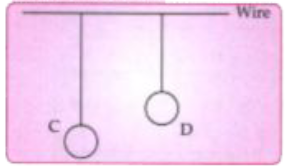
(i) Name the type of oscillation, C will execute.
(ii) Name the type of oscillation, D will execute.
(iii) If the length of D is made equal to C then what difference will you notice in the oscillations of D?
(iv) What is the name of the phenomenon when the length of D is made equal to C?
(i) C will execute free or natural oscillations.
(ii) D will execute forced oscillations.
(iii) The amplitude of oscillations of D will increase and it will oscillate is same phase as that of C.
(iv) Resonance.
Topper's Solved these Questions
Similar Questions
Two pendulums C and D are suspended from a wire as shown in the figure given below. Pendulum C is made to oscillate by displacing it from its mean position. It is seen that D also starts oscillating.
Name the type of oscillation, D will execute.
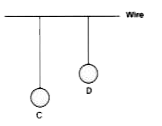
View SolutionTwo pendulums C and D are suspended from a wire as shown in the figure given below. Pendulum C is made to oscillate by displacing it from its mean position. It is seen that D also starts oscillating.
Name the type of oscillation, C will execute.
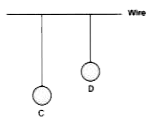
View SolutionTwo pendulums C and D are suspended from a wire as shown in the figure given below. Pendulum C is made to oscillate by displacing it from its mean position. It is seen that D also starts oscillating.
What is the name of the phenomenon when the length of D is made equal to C ?
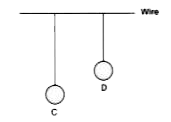
View SolutionTwo pendulums C and D are suspended from a wire as shown in the figure given below. Pendulum C is made to oscillate by displacing it from its mean position. It is seen that D also starts oscillating.
If the length of D is made equal to C then what difference will you notice in the oscillations of D?

View SolutionThe time period of oscillations of a simple pendulum is 1 minute. If its length is increased b 44% then its new time period of oscillation will be
View SolutionWhat is the period of oscillation of a simple pendulum if its bob is made of ice ?
View SolutionIn a simple pendulum the period of oscillation (T) is related to the length of the pendulum (L) as
View SolutionWhen the point of suspendion of pendulum is moved, its period of oscillation
View SolutionDraw graph showing the variation of displacement with time of a body executing (i) free oscillation (ii) damped oscillations.
View SolutionFour pendulums A,B,C and D are suspended from the same elastic support as shown in figure. A and C are of the same length , while B is smaller thatn A and D is larger than A. If A is given a transverse displacement,
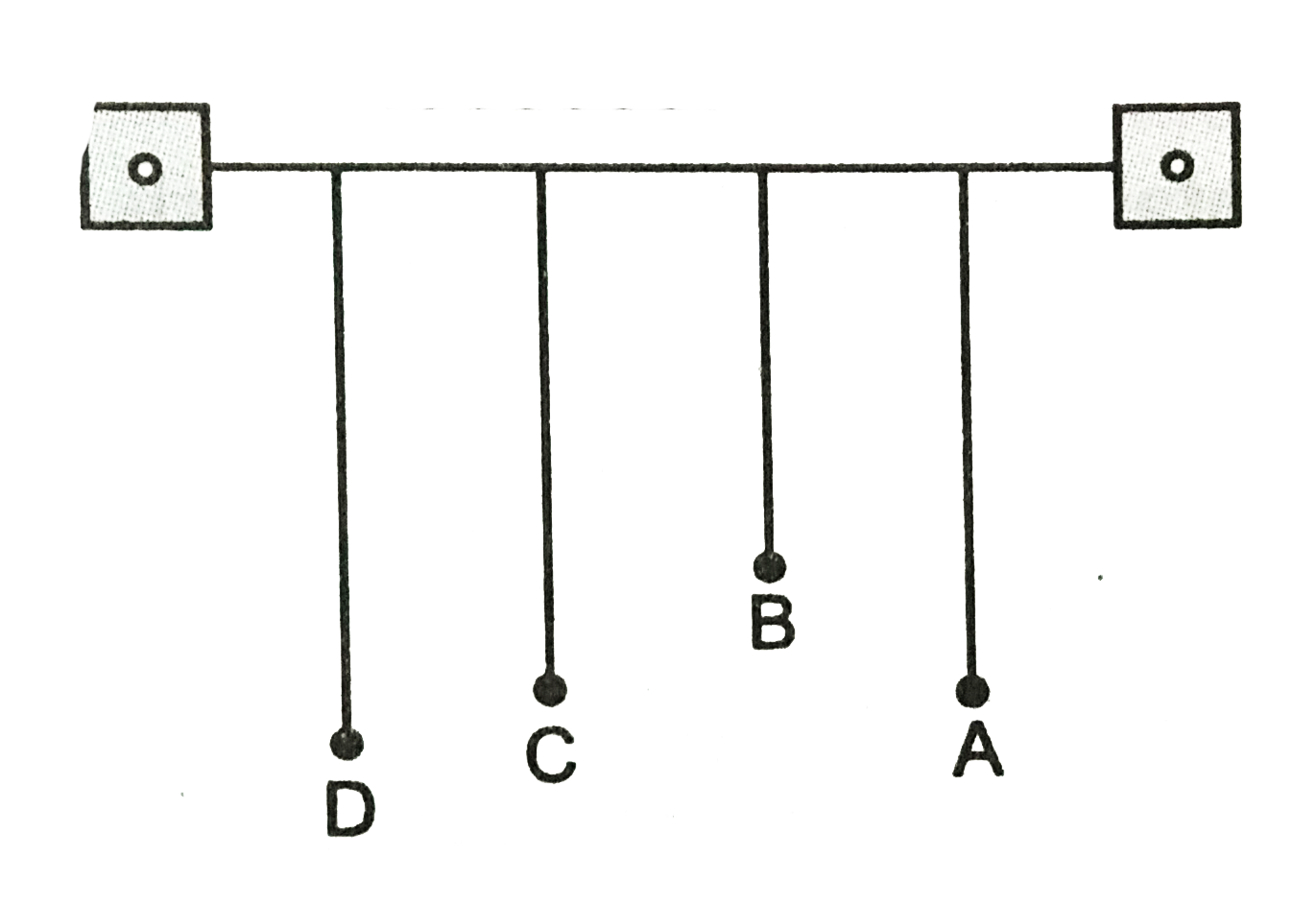
View Solution
